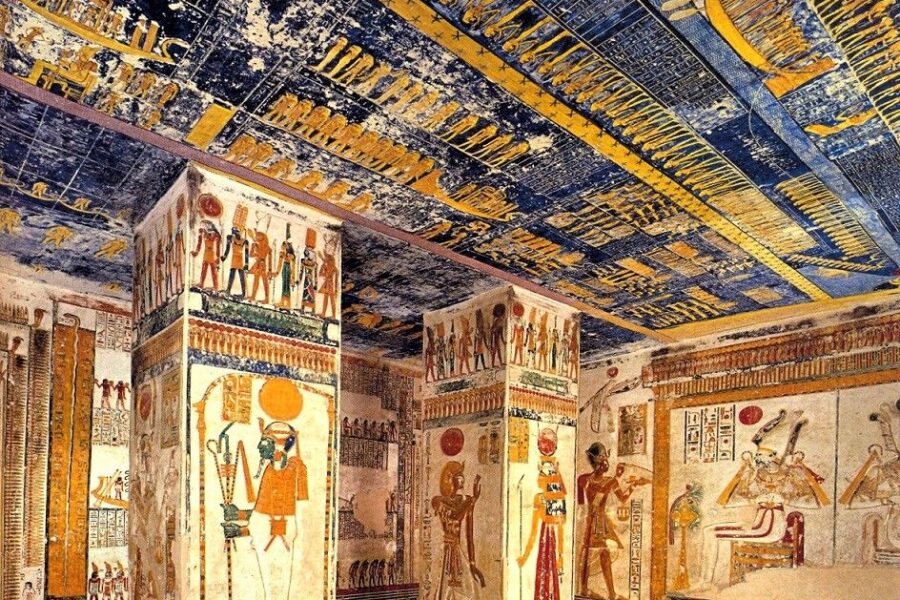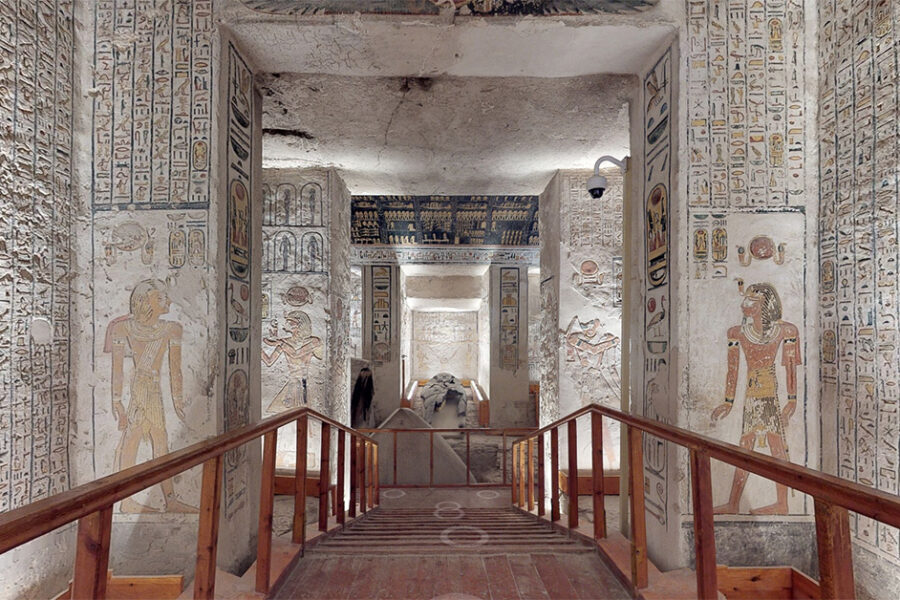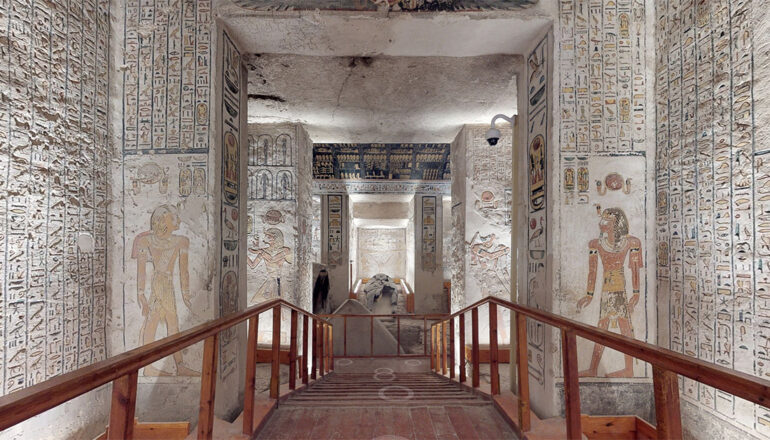Ramses VI was a son of Ramesses III; the latter considered the last great pharaoh of the New Kingdom period. This filiation is established without a shadow of a doubt by a great relief found in the portico of the temple of Medinet Habu of Ramesses III, known as the “Procession of the Princes”. The relief shows ten princes including Ramesses VI, worshiping their father.
Ramses VI’s mother was probably Iset Ta-Hemdjert , of Ramses III the Great Royal Wife, as suggested by the presence of Ramses VI scrolls on a doorjamb his tomb in the Valley of the Queens.
History of the Tomb
Ramses VI was buried in the Valley of the Kings , in a tomb now known as KV9. The tomb was built for Ramesses V, who may have been buried in it for the short time necessary for another, probably undercoated tomb, to be cut for him somewhere else in the Valley of the Kings and which remains to be discovered . In any event, Ramses VI commanded that KV9 be completely refurbished for himself, with no space left for the permanent burial of Ramesses V, who was finally brought to rest in Ramses VI’s second year on the throne.
The renewed KV9 works are responsible for the preservation of that of Tutankhamen, whose entrance was buried under huts built for craftsmen working on the tomb of Ramses VI. These works appear to have been completed during Ramses VI’s sixth year of reign. 
Decorations of the Tomb
The tomb’s decorated walls consists of various funerary texts to help the king in his successful transition to the afterlife, including the Book of Gates, Book of Caverns, the Ami-duat, and the Book of the Dead. All ceilings are decorated with astronomical scenes and texts. The ceiling of the burial chamber is decorated with a striking scene that depicts the sky goddess Nut arched over the earth. The sun disk is depicted in front of her mouth, which she is about to swallow. This is a mythological representation of sunset. Twelve sun disks can then be seen inside the extended length of Nut’s body, representing the sun god’s daily twelve-hour journey through the underworld at night, before his rebirth in the east, young, renewed, and full of life. Through this text, just like the sun god, the king could achieve a glorious rebirth in the eastern horizon at dawn.
The highlight of the tomb is the burial room; The burial room itself is beautifully decorated, with a superb double image of Nut framing the Book of the Day and Book of the Night on the ceiling. This nocturnal landscape in black and gold shows the sky goddess swallowing the sun each evening to give birth to it each morning in an endless cycle of new life designed to revive the souls of the dead pharaohs. The walls of the chamber are filled with fine images of Ramses VI with various deities, as well as scenes from the Book of the Earth, showing the sun god’s progress through the night, the gods who help him and the forces of darkness trying to stop him reaching the dawn. Look out for the decapitated kneeling figures of the sun god’s enemies around the base of the chamber walls and the black-colored executioners who turn the decapitated bodies upside down to render them as helpless as possible.


